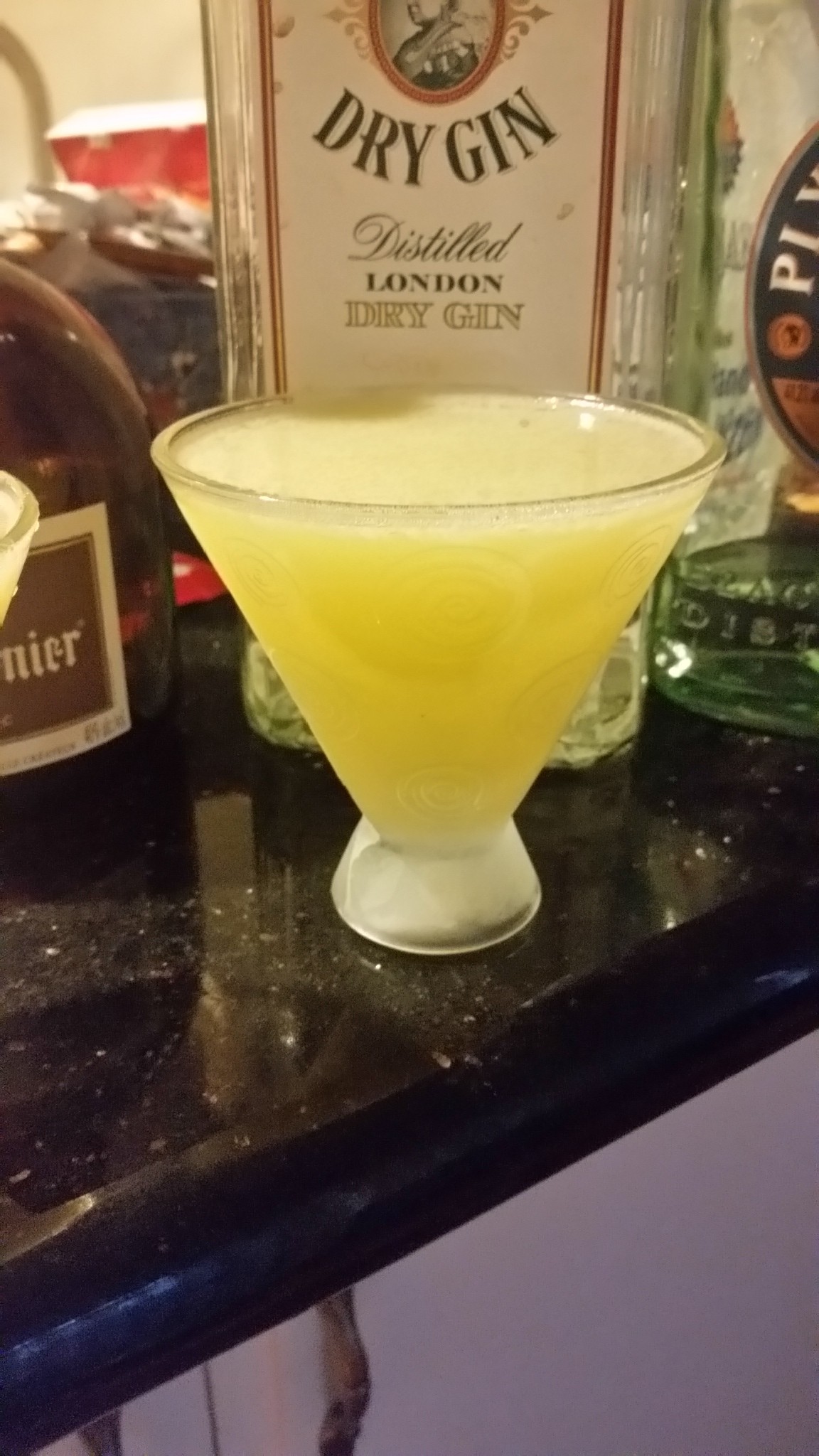Drink of the Week: The Hawaiian Cocktail
 I’m not sure how it was that you could call a drink The Hawaiian Cocktail back in the day without including any specifically Hawaiian ingredients, but that was apparently the case when “The Savoy Cocktail Book” was published in 1930. Indeed, based on the ingredients, it may have been more apt to call today’s drink the Californian or Florida Cocktail, since there isn’t a trace of anything native to Hawaii and the drink is dominated by orange juice. On the other hand, if you take a picture of this drink in the right light, it’s pretty much the same color as pineapple juice, so there’s that.
I’m not sure how it was that you could call a drink The Hawaiian Cocktail back in the day without including any specifically Hawaiian ingredients, but that was apparently the case when “The Savoy Cocktail Book” was published in 1930. Indeed, based on the ingredients, it may have been more apt to call today’s drink the Californian or Florida Cocktail, since there isn’t a trace of anything native to Hawaii and the drink is dominated by orange juice. On the other hand, if you take a picture of this drink in the right light, it’s pretty much the same color as pineapple juice, so there’s that.
So, why this particular drink? Well, within 30 or so hours of the time this post goes live, I will be on Kauai to attend the wedding of a very old and valued friend and, if not now, then when? Yes, there are better known cocktails associated with the 50th state in the Union, and I’m pretty sure there are probably better tasting ones. However, they’re mostly a bit more fattening than average, and I’m actually trying to lose weight right now.
Suffice it to say, this is a drink that’s a bit on the sweet side but which, I think, can work reasonably okay if you keep your ingredients on a short leash.
The Hawaiian Cocktail
2 ounces gin
1 ounce fresh orange juice
1/2 ounce orange curacao or Grand Marnier
Add the ingredients to a cocktail shaker with lots of ice, shake very vigorously and strain into a cocktail glass. Salute our nation’s 50th state and maybe look up the meaning of “mahalo” for the 50th time. I know it means something nice and polite, but I keep forgetting what that is.
****
The original recipe for the Hawaiian Cocktail calls for “curacao (or any other of the Orange Liqueurs)” [sic]. My experience, however, says otherwise.
While using plain old Hiram Walker Orange Curacao yielded a very sweet but acceptable drink, a similar bottle of DeKuyper triple sec crossed the line into wretched excess. I was surprised, however, when I tried it with vastly more high-end Cointreau, which is less sweet and more bitter than your less expensive orange liqueurs. The surprise is that it was a great deal worse, the bitterness of the Cointreau somehow making the concoction taste more sickening sweet that anything else. On the other hand, using Cointreau’s best known competitor in the fancy orange liqueur space, Grand Marnier, improved the drink quite a bit despite having a not entirely dissimilar flavor profile. My only theory on that point is that Grand Marnier is actually a type of orange curacao, while Cointreau is a type of triple sec. No, I’m not really sure what the difference is, either.
I will add that the one added imponderable here is that some oranges are sweeter than others. If you’re working with a very sweet batch of oranges, it might be advisable to dial back whatever brand of orange liqueur you go with. Mahalo.
Related Posts
Posted in: Food & Drink, Lifestyle, Vices
Tags: cocktails, Drink of the Week, Happy Hour, The Hawaiian Cocktail





